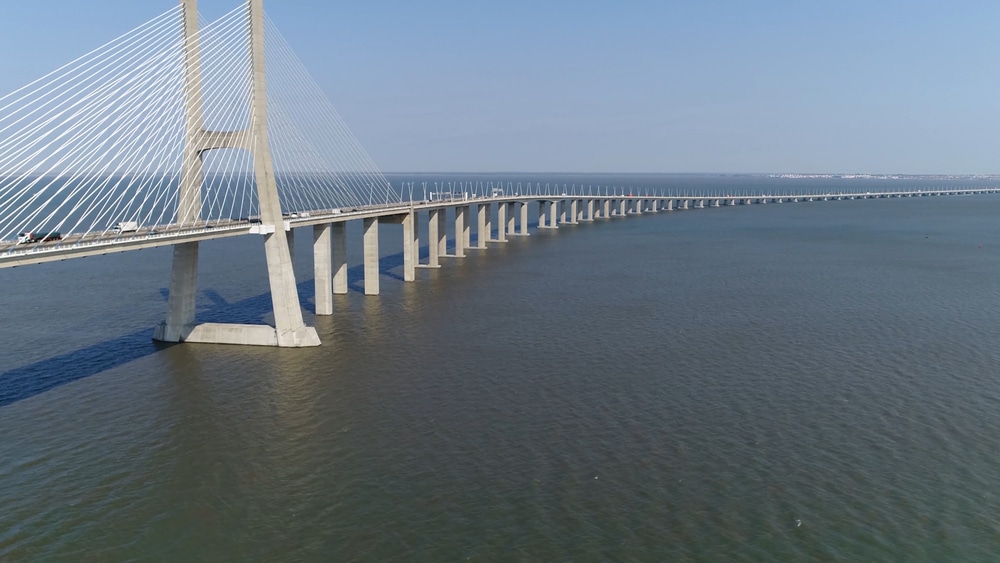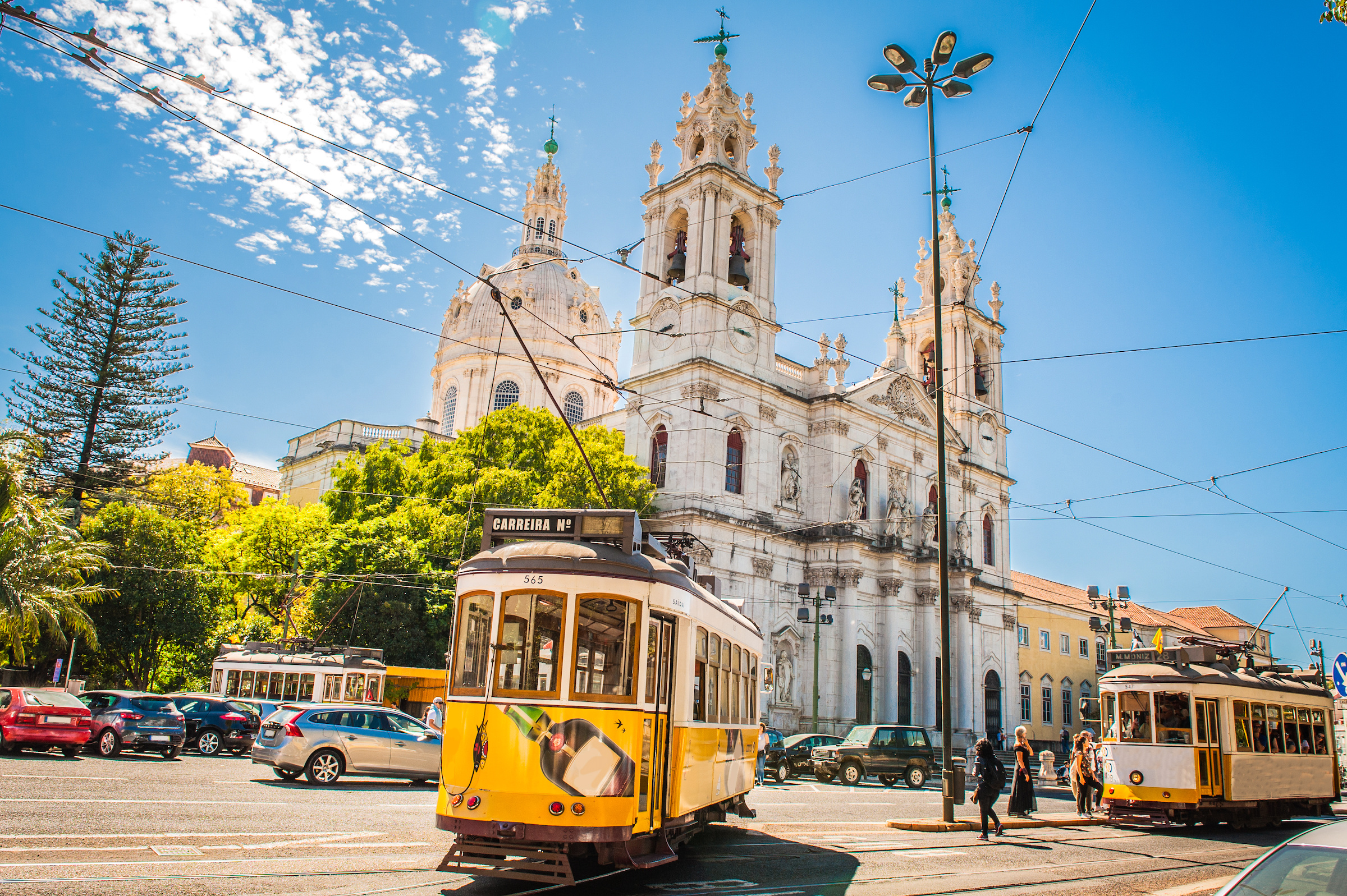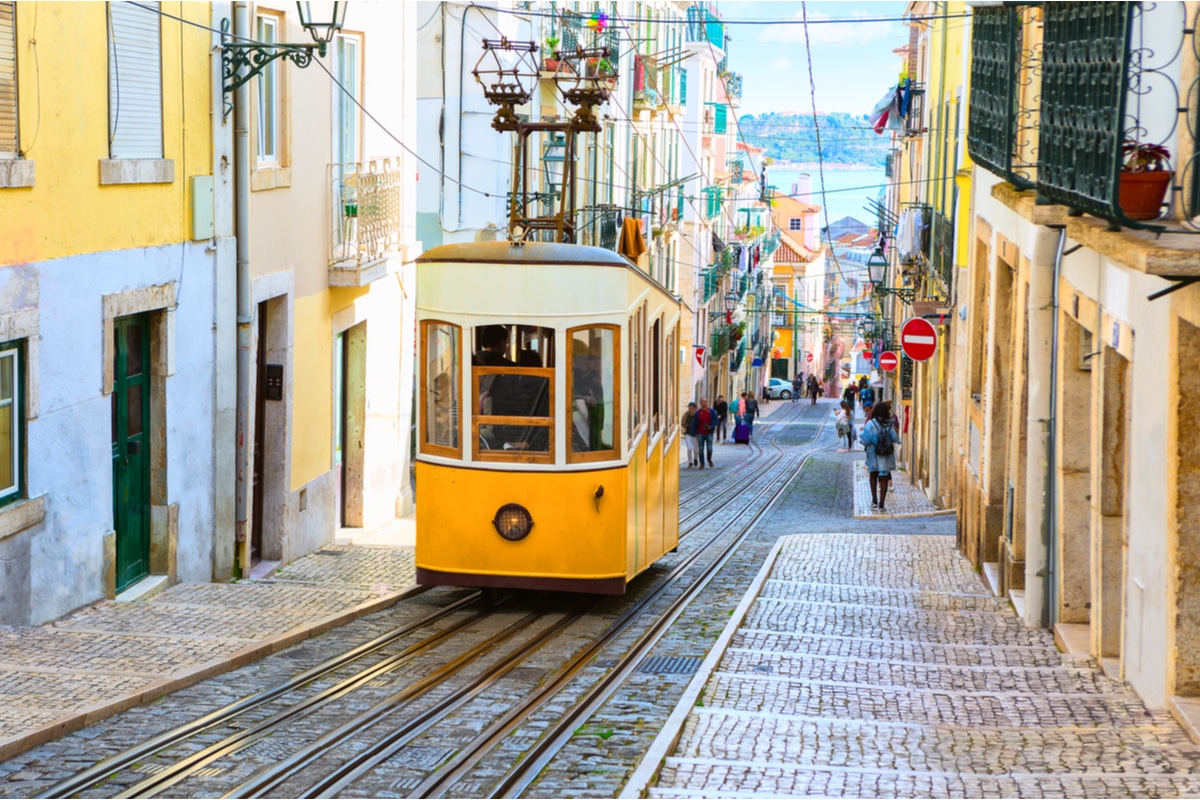Vasco da Gama Bridge
The cityscape of Lisbon, the capital of Portugal, includes not only a multitude of historical sights but also a technical masterpiece in the form of the Ponte Vasco da Gama. The bridge, 12.3 km long without access roads, spans the Tagus, the country's largest river, which widens into a delta near Lisbon before flowing into the Atlantic Ocean.

If you add the approaches to the bridge, it stretches over 17.2 km and is thus considered one of the longest bridges in the world. The A12 motorway runs over the bridge with a total of 6 lanes to the other side of the Tagus Delta.
Lisbon - development through bridging
The Portuguese capital is limited at its southern end by the more than 10 km wide estuary delta of the Tejo. The only way to reach the other side of the delta was by ferry or other ships. Thus, until the 1960ies, the economic and also the urban development possibilities of Lisbon were strongly limited. Only a bridge in the truest sense could overcome this limitation.
Thus, in 1966, with the help of a bridge, a first fixed connection to the southern end of the Delta was created. However, the Ponte 25. de Abril was quickly overloaded and the up to 44 million lorries and passenger cars that pass through it each year had to be guided to the bridge through Lisbon's old town. The Ponte Vasco da Gama, which was under construction from 1995 onwards, was intended to provide relief.
Modern architecture in honour of a discoverer
In 1998, the world exhibition Expo 98 took place in Lisbon, exactly 500 years after the Portuguese navigator Vasco da Gama discovered the sea route to India and acted as viceroy there. Thus, it was decided to erect a monument to the discoverer and name the bridge after him. The structure was constructed as a cable-stayed bridge and connects the city of Lisbon with, among others:
- the former Expo site
- the international airport
- several towns south of Lisbon (Alcochete, Montijo, Setúba)
In terms of construction, the Ponte Vasco da Gama is distinguished not only by its length but also by its 155-metre-high H-shaped pylons, to which struts made of steel cables are attached. These pylons would withstand even if they were rammed by a ship travelling at 12 knots and weighing 30,000 tonnes. The longest part of the bridge (about 10 km) rests on a total of 166 piers, which were driven up to 95 metres deep into the ground. Between the two main pylons, ships up to a height of 45 metres (at high tide) can pass the bridge.
Nature conservation and resettlement
In order to create enough space for the construction of the bridge, a total of 300 families had to be resettled from a poor neighbourhood located in the construction area of the western approach to other areas of the city before construction began. Another aspect that had to be taken into account was the Parque Natural do Estuário do Tejo, a nature reserve known for its population of more than 250 different migratory and water birds, which placed special demands on the architects of the Ponte Vasco da Gama.
The protection of the approximately 14,000 hectares of mudflats was a high priority in the construction of the bridge. In addition, Lisbon is located in a region where earthquakes occur. Therefore, the Ponte Vasco da Gama was designed to withstand stronger earthquakes of 8.5 to 9 on the Richter scale. Today, the Ponte Vasco da Gama is considered a symbol of modern Portugal.



